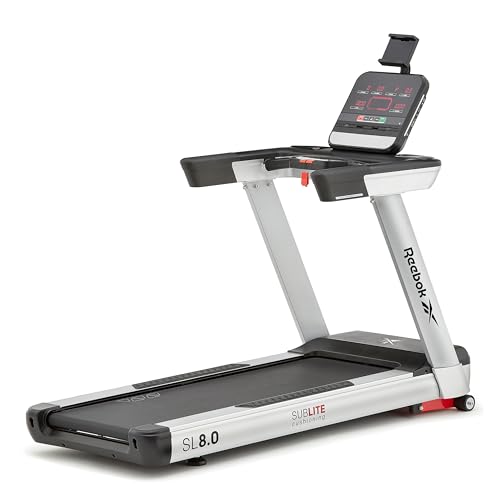The Ultimate Glossary For Terms Related To Non-Folding Treadmill
The Allure of Treadmills Without Electricity: A Comprehensive Guide
In a world progressively dominated by state-of-the-art physical fitness devices, the simpleness and practicality of a treadmill that doesn't require electricity might seem like a throwback. However, treadmills without electricity— typically described as “manual treadmills”— have gotten substantial popularity amongst fitness lovers looking for a more straightforward, environmentally friendly exercise alternative. This blog site post looks into the myriad advantages, functions, and considerations surrounding manual treadmills, as well as answering typical questions from prospective purchasers.
What is a Manual Treadmill?
A manual treadmill is a piece of exercise devices that allows users to stroll or run without needing electrical power. Rather than motorized treadmills that move the belt for you, manual treadmills depend on the user's own effort to propel the belt forward. Here's a quick comparison between manual and motorized treadmills:
Feature
Manual Treadmill
Motorized Treadmill
Source of power
None
Electricity required
Personnel Mechanism
User-powered
Motor-driven
Expense
Normally more affordable
Usually more costly
Portability
Extremely portable
Typically heavier, less portable
Maintenance
Low
Needs more upkeep
Workout Intensity
Higher (more effort)
Can be adjusted
Benefits of Using a Manual Treadmill
Cost-efficient:
- Manual treadmills are generally much less expensive than their electrical counterparts. With click through the following website page and no continuous electricity costs, these treadmills can be an exceptional option for budget-conscious individuals.
Eco-Friendly:
- As there are no motors or electrical components involved, manual treadmills are a sustainable option. They don't take in fossil fuels and leave a smaller sized carbon footprint.
Flexible Workout:
- Because they require the user to develop their own momentum, manual treadmills can use more intense exercises, suitable for those looking to increase their endurance and strength.
Portability:
- Manual treadmills are typically lighter and simpler to transfer. They allow users to easily keep them away or move them from one place to another.
Minimized Risk of Injury:
- By enabling for a more natural running movement, manual treadmills can help reduce the threat of injury compared to motorized options. Users have control over their speed and can stop or decrease immediately.
Key Features to Consider
When thinking about a manual treadmill, certain functions need to be considered:
- Belt Quality: Look for a non-slip, long lasting surface area that uses sufficient grip for safety during workouts.
- Incline Levels: Many manual treadmills come with adjustable incline features. Greater slopes can increase workout intensity.
- Dimensions: Space can be a restriction, so analyzing the treadmill's footprint is crucial.
- Weight Capacity: Always examine the maker's weight recommendations to guarantee security and longevity.
- Display Monitor: Some manual treadmills consist of basic displays for tracking elapsed time, distance, and calories burned.
Feature
Description
Belt Quality
Non-slip and resilient products for security
Incline Levels
Adjustable settings for increased exercise difficulty
Dimensions
Size and weight for ease of storage and transport
Weight Capacity
Ensure the treadmill accommodates the user's weight easily
Show Monitor
Optional performance tracking includes
Selecting the Right Manual Treadmill
Offered the range of manual treadmills readily available on the marketplace, choosing the right one includes evaluating individual fitness objectives and requirements. Here's a simplified list to guide consumers:
- Assess your fitness objectives: Are you going for weight-loss, endurance, or general physical fitness?
- Consider the readily available area: Ensure the treadmill will fit well in your designated exercise area.
- Inspect for functions: Look for adjustable incline settings or included innovation such as a distance tracker.
- Research study brand names and reviews: Read about the experiences of other users to determine the dependability and resilience of the design you're thinking about.
- Set a budget: Compare various models while keeping your budget plan in mind.
Often Asked Questions (FAQ)
1. Are manual treadmills ideal for all fitness levels?
Yes, manual treadmills deal with various physical fitness levels. Beginners can begin at a slower pace, while advanced users can increase strength and speed.
2. How do manual treadmills affect calorie burn as compared to motorized ones?
Manual treadmills may cause greater calorie burn throughout workouts, as users should apply more effort to move the belt.
3. Do I need to assemble a manual treadmill?
A lot of manual treadmills come partially assembled, however you'll likely need to complete some assembly depending on the design.
4. Can I carry out interval training on a manual treadmill?
Absolutely! Manual treadmills are excellent for interval training given that users can easily change their speed and start/stopping motions.
5. How do I keep a manual treadmill?
Maintenance is easy: regular cleansing of the belt and frame, looking for wear and tear, and guaranteeing empty storage when not in usage.
Manual treadmills offer numerous benefits, making them an appealing option for many physical fitness lovers. Their energy-efficient style, combined with the capability to offer reliable exercises, has actually sealed their place in home physical fitness routines. With a clear understanding of their functions and advantages, individuals can make an educated decision about whether a manual treadmill is the best choice for their health journey.
The simple appeal of manual treadmills— paired with their cost-effectiveness and sustainability— ensures they stay appropriate in today's fitness market, supplying a compelling option to electric designs.
